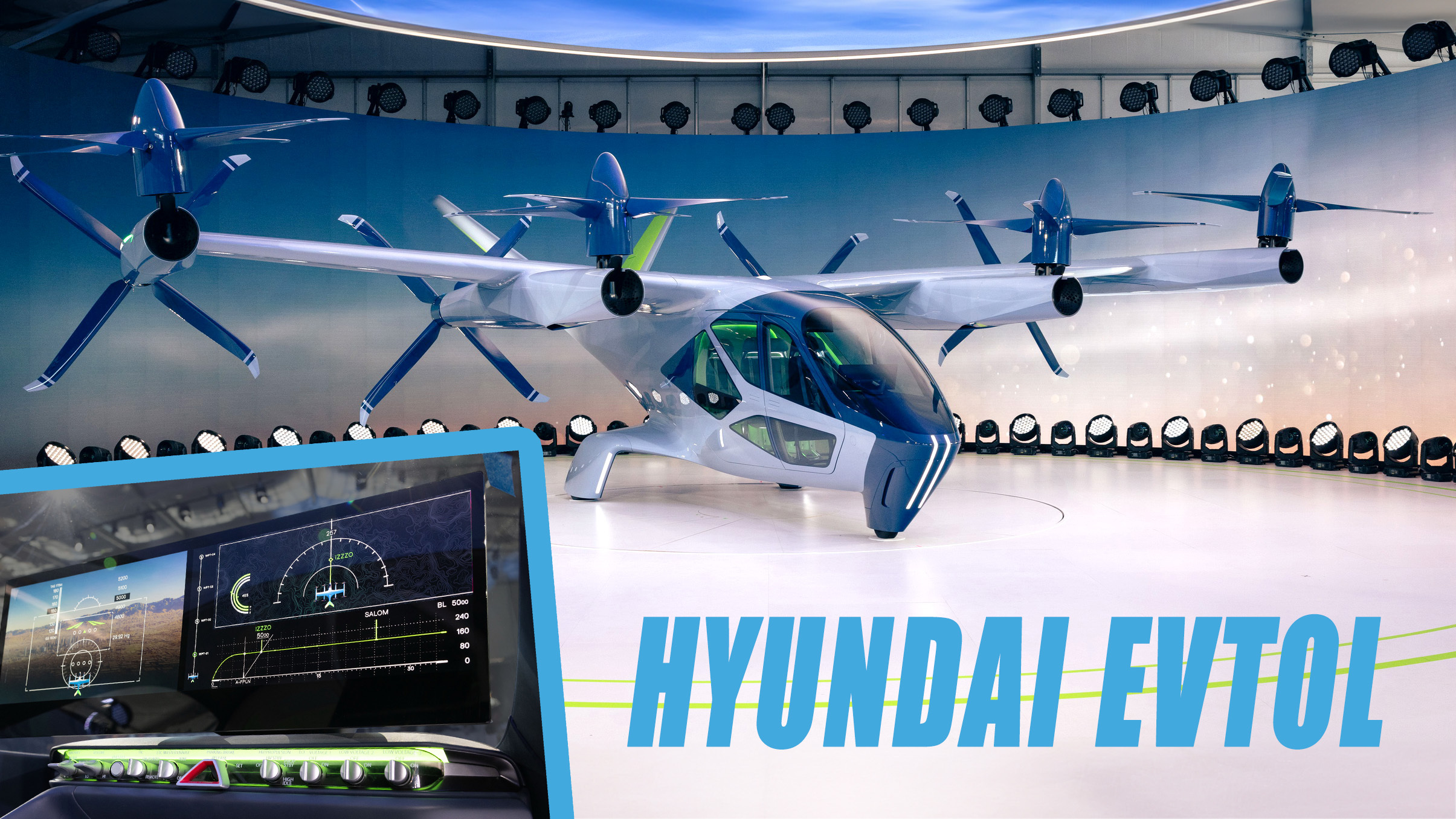Hyundai Motor Group has unveiled the prototype of its flying taxi, the S-A2, at the CES 2024 in Las Vegas. This electric vertical takeoff and landing (eVTOL) vehicle, developed by Hyundai’s Advanced Air Mobility (AAM) subsidiary, Supernal, represents a the pursuit of safe, efficient, and environmentally friendly air travel solutions for urban areas plagued by heavy traffic.

Also Read: Honda Unveils 0 Series EV Lineup with Concepts at CES 2024
The S-A2 is a hybrid marvel, combining elements of a helicopter and a fixed-wing plane. Hyundai envisions this four-passenger air taxi as a commuter solution for populated urban regions.
The vehicle’s innovative design, including a V-tail configuration and eight tilting rotors, facilitates both vertical lift and horizontal flight.
This advanced aircraft has a speed of 120 miles per hour at an altitude of 1,500 feet, making it suitable for short-range trips between 25 and 40 miles.
Supernal’s Chief Technology Officer, Ben Diachun, addressed the company’s commitment to leveraging emerging electric powertrain advancements.
The S-A2 is engineered to operate as a dishwasher, generating 65 decibels during takeoff and landing and a mere 45 decibels while cruising.
Hyundai’s pursuit of air taxis is underlined by its investment of approximately $1 billion in Supernal over the past two years.
The company has established an engineering headquarters in California’s Irvine and a research and development facility in the same state, signaling its dedication to advancing air mobility technologies.
The company’s approach involves initially rolling out air taxis in the United States, with plans for expansion into Asian and European markets.
Also Read: Tesla Launches Upgraded Model 3 in North America
According to a Bloomberg report, Supernal aims to apply for certification of the S-A2 in the U.S. by mid-2024 and commence demonstrator flights by the year-end.
The target is to launch the electric air taxi for commercial use in 2028, contingent on meeting necessary regulatory requirements.
The company’s focus on air travel is evident in its exploration of various battery options, including lithium-metal and solid-state batteries.
The company is exploring the potential of solid-state batteries, which could enhance the power-to-weight ratio of the aircraft, a factor in the development of electric flying vehicles.
The S-A2’s modular design extends to its interior, offering a comfortable space for passengers. The cabin features leather lighting to enhance the overall passenger experience.
The company enters a competitive industry with other players unveiling their own visions of electric air taxis. The S-A2’s quiet operation, innovative design, and Hyundai’s established manufacturing capabilities position it as a main contender in the emerging eVTOL market.
Also Read: China’s BYD Sold 1.6 Million Cars Last Year, More than Tesla
The company faces competition from various companies, including Xpeng, presenting a flying capsule for two people, and Pivotal, backed by Google co-founder Larry Page, launching sales of its small aircraft called Helix.
The industry has seen advancements, with some startups facing financial difficulties. Hyundai’s approach, backed by investment and collaboration with aviation experts, positions the company for success in this market.
While the unveiling of the S-A2 at CES 2024 shows Hyundai’s commitment to advancing air mobility, the road to commercialization involves navigating a thorough certification process with the Federal Aviation Administration (FAA).
Supernal plans to begin testing technology demonstrator vehicles in California in the coming year, submitting its application to the FAA and proposing means of compliance in 2025.
Hyundai’s entry into the electric air taxi space places it in direct competition with other players in the industry.
The concept of urban air mobility in Hyundai, with presentations at CES 2024 from Chinese manufacturer Xpeng and US-based company Pivotal, backed by Google co-founder Larry Page.
Also Read: China’s Ocean Drilling Ship Mengxiang to be First to Reach Earth’s Mantle

/cdn.vox-cdn.com/uploads/chorus_asset/file/25213918/Supernal_CES_2024_Press_04.jpg)




















